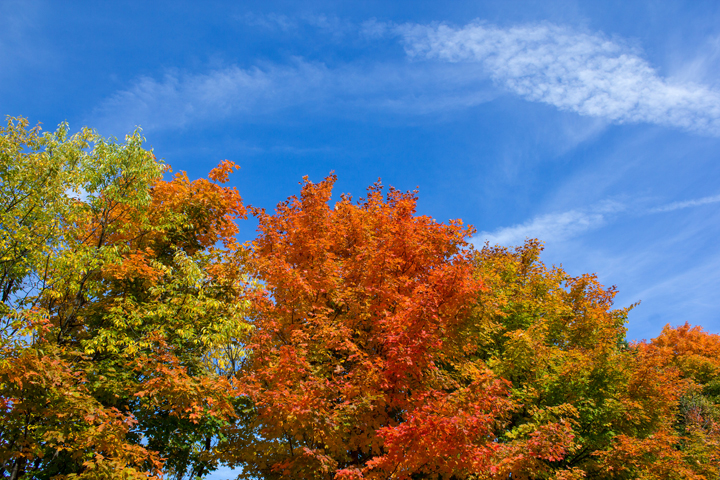The air is getting crisper, the daylight hours are dwindling, and the birds are beginning their southerly trips to warmer climes. Though all these signs may herald cooler weather and visions of shoulder-high snow drifts, it also means weeks of dazzling colour.

Canada is home to more than 100 tree species, many of them deciduous. And in part due to that, we are one of the best places on Earth to witness the spectacle of colour the forests bring us each fall.
READ MORE: The science behind fall and the autumnal equinox
The places to see the most varied colours are in southern Ontario, Quebec and the Maritimes said Robert Guy, professor of forestry at the University of British Columbia, and that’s due to the prevalence of maple trees in the region.
The science
Basically leaves change colour out of self-preservation.
Trees manufacture food through a process called photosynthesis (using sunlight to turn water and carbon dioxide into glucose and oxygen) that involves a chemical called chlorophyll. That chlorophyll gives plants their green colour.
But as the cooler weather approaches and the daylight hours get shorter, it signals to the tree that it needs to preserve some food for the winter months. They in turn store whatever nutrients and food they can get in the trunk. The leaves are expendable.
A cork-like build-up forms at the base of the stem, sealing off the leaf from the rest of the tree, thereby preserving the nutrients.
“Before they completely die, they take that nitrogen, nutrients and sugar…and move it back into the trunk for storage,” said Guy. “It’s a delicate process.”
When that happens, the chlorophyll is destroyed and other pigments are revealed in the leaves. Aspens produce yellows; maples, orange-reddish hues; oaks, red, for example.
The vibrancy of the leaves is dependent on weather conditions. Warm days and clear, cool nights, with low moisture help produce brighter colours.
“Throw in a little drought and that can give you your bright colours, too,” said Guy.
And just how long the colours last is also largely dependent on weather conditions.
Guy said that while southern Ontario, Quebec and the Maritimes enjoy some of the most vibrant colours, the entire country is treated to a beautiful display.
Aspen trees produce lovely colours in Saskatchewan. In Alberta and British Columbia, yellows and oranges can be seen at higher elevations.
If you can’t get out to see some of the bright reds and oranges of eastern Canada, you can watch the leaves change over the next few weeks with a live webcam set up in Algonquin Park, Ontario.
And if you’re in Ontario, you can find the best locations by visiting an Ontario Parks website that offers daily updates on the colours. For Quebec, visit Quebec Original’s website.





Comments